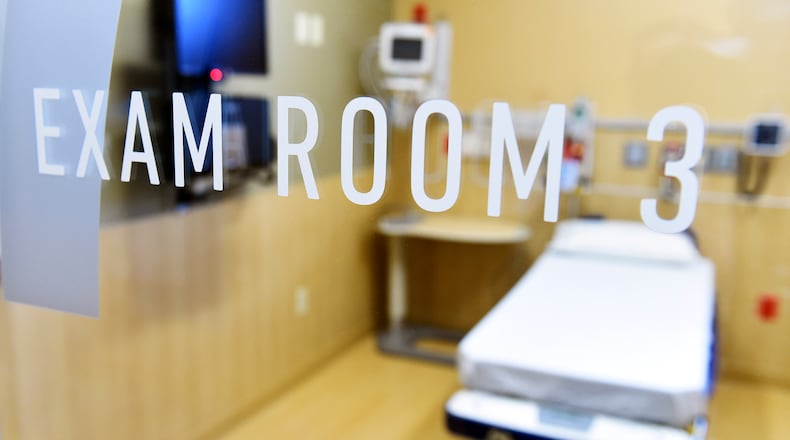“Maternal health is a strong predictor of a child’s health, so by extending health coverage for new moms, we are helping to provide the healthiest possible start in life for Ohio’s children,” said Gov. Mike DeWine.
The American Rescue Plan Act (ARPA) provided the option for states to expand this Medicaid coverage for new moms from 60 days to 12 months. The state of Ohio’s budget included this expanded coverage in its portion of Medicaid funding, since Medicaid is a shared cost between states and the federal government.
DeWine said the state of Ohio began this extended coverage on April 1 and CMS’s final approval is the last step to continuing those services.
Maureen Corcoran, director of Ohio Medicaid, said the state has estimated that the extension since April 1 would have applied to approximately 9,100 people so far. Corcoran noted that, due to the the COVID-19 public health emergency, Medicaid is not allowed to unenroll anyone from Medicaid, so their coverage would have continued regardless of the extended coverage.
“We know that access to postpartum care not only saves lives but leads to better health outcomes for moms and their babies,” Corcoran said. “Extending eligibility for a full year postpartum ensures women have access to critical services that impact maternal morbidity and mortality, as well as the health of their baby.”
According to the Ohio Department of Health’s Bureau of Vital Statistics, from 2008-2017, there were 731 pregnancy-associated deaths in Ohio; 30% were pregnant at time of death, 20% were pregnant within 42 days of death, and 50% were pregnant within 43 to 365 days of death.
Corcoran said the state hopes this extension of coverage will help address those maternal mortality rates, as well as infant mortality rates, which both also disproportionately impact Black babies.
According to the Ohio Department of Health, Black babies died from prematurity-related causes at three times the rate of white infants, and prematurity is the leading cause of death among all infants. The neonatal morality rate for white infants is 3.4 infant deaths per 1,000 live births, while the neonatal mortality rate for Black infants is 8.9 infant deaths per 1,000 live births. The post-neonatal mortality rate for white infants is 1.6, but it is 4.7 for Black infants. Neonatal refers to the first 28 days postpartum, and post-neonatal refers to the death of a newborn between 28 days and one year.
In Montgomery County, 58 Montgomery County babies died before their first birthday in 2019, according to Public Health - Dayton & Montgomery County. This is an increase from 44 in 2018. As a result, the county’s infant mortality rate increased from 6.8 deaths per 1,000 live births to 9.
Medicaid is a state and federal program for low-income and disabled Americans.
Corcoran said approximately two-thirds of the individuals who qualify for Medicaid while pregnant also qualify for Medicaid after the previous 60-day cut off point. That still left one-third of new mothers without coverage.
“What we saw is a lot of people fall through the cracks,” said Loren Anthes, Public Policy Fellow for the Center for Community Solutions. With that loss of coverage, health care issues can become more pronounced, he said.
In addition to addressing infant mortality rates, Anthes noted mental health issues and suicide ideation among people who give birth were exacerbated by the pandemic. Anthes also noted that, following the U.S. Supreme Court’s ruling in the Dobbs v. Jackson Women’s Health Organization case, which ruled the U.S. Constitution does not confer a right to abortion access, this will at least provide some pathway for individuals forced to give birth to have access to medical coverage and supports after delivery.
“There’s a lot of advantages to ensuring that women who deliver, people who deliver, have access to care and coverage,” Anthes said. “This is evidence that Ohio is doing the right thing.”
In addition to wanting to care for the mother postpartum, Corcoran said children who have parents with medical coverage do better than children with parents who don’t have medical coverage, regardless if the child has medical coverage.
“Moms will get better care, and we know that the kids will get better care because the mom gets better care,” Corcoran said.
In addition to Ohio, CMS approved this extension for Hawaii and Maryland. HHS estimates this extension will impact approximately 34,000 people annually, including 2,000 in Hawaii; 11,000 in Maryland; and 21,000 in Ohio.
Ohio Medicaid is also now covering the cost of doulas, who provide guidance and support for pregnant individuals and people who recently gave birth. Corcoran said they have found that Black women, when describing their concerns about their care, are often not taken seriously when it comes to concerns like blood spotting or pain. A doula can provide another support for the mother to advocate for their needs.
“We have a very significant agenda that is focused on enabling every child to achieve their God-given potential,” Corcoran said.
Additional coverage includes treatment for postpartum depression; medical care for chronic conditions, such as hypertension or diabetes; breastfeeding resources; and evidence-based nurse home visiting.
“The Governor’s Bold Beginnings initiatives are bringing a much-needed focus to women’s and children’s health,” said Steve Ringel, Ohio Market President for CareSource, a managed health care plan serving Medicaid members in Ohio. “CareSource is proud to work with the Ohio Department of Medicaid to extend coverage to mothers for a year. This allows for everyone to adjust to a major life change of having a child and dealing with the continued social and economic challenges that have come from COVID and the public health emergency.”
About the Author

